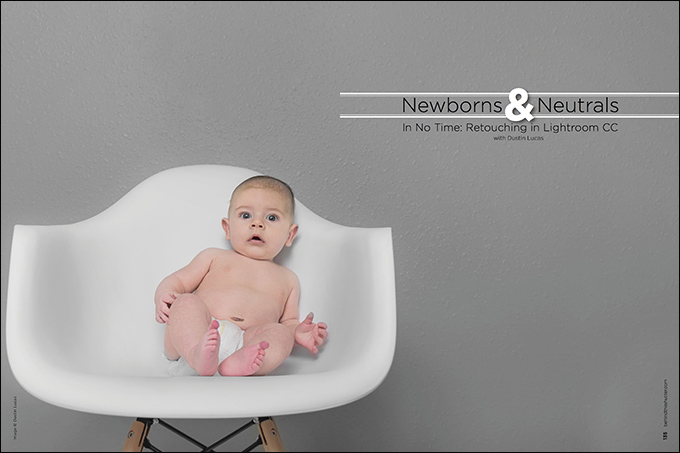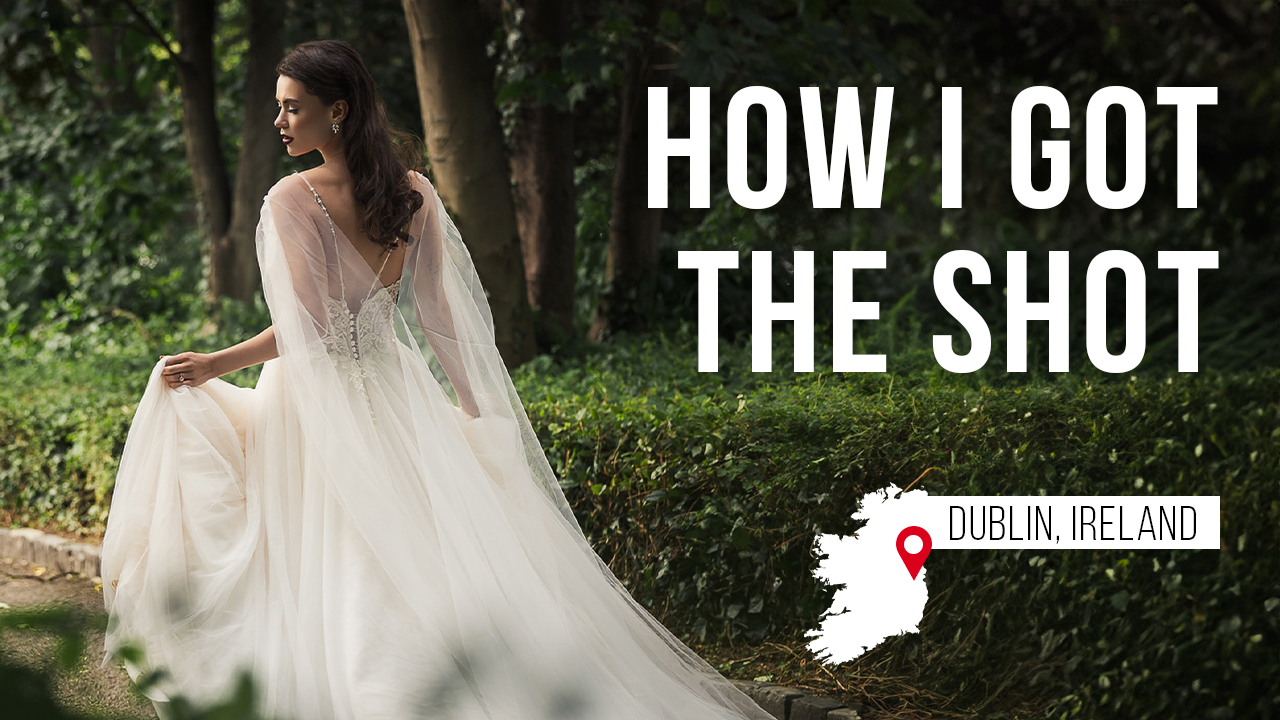Newborns and Neutrals in No Time—Retouching in Lightroom CC with Dustin Lucas
Photographing newborns in an ideal setting can be difficult when you are working on location. We rush to the window light and make due with the nursery (for character) or living room (for that wide-open spacing). I try to find neutral tones and bare walls, and slightly overexpose in-camera to get the image close to how I want it delivered to the client.
Whether I am close or not in camera, it’s Lightroom to the rescue. Why Lightroom and not Photoshop? Time is of the essence. Moms want those images practically same day. My wife wants them even sooner.
You can do heavy research and purchase presets for newborns in Lightroom. Do not let me stop you from using the click-and-go technique as a starting point. I happily encourage presets, and use them to shift my untouched Raw files before retouching. Let’s build some together, and then move into adjustment brushes for the fine tuning of the image.
Build Presets
The initial investment for purchasing or building presets pays off in the time you will save. To build some, let’s review the Develop panels in Lightroom and begin dividing them into global versus specialized tools. Most commonly used is the Basic panel, a great starting point to apply globally. We can pull down some contrast for a softer look overall by lifting shadows, reducing highlights, making subtle adjustments to the black-and-white point sliders and lowering the contrast slider into the negatives. (1)
This is our starting preset. Save these settings by holding Shift + Command + N. Create a new folder to begin organizing the presets. Select all the sliders we adjusted, and click Create. (2)
If you like to globally apply Noise Reduction and Sharpening, these can also be added to the starting point preset. Use Lens Correction, and leave it at the default settings. We can make separate presets for these so you have a little more flexibility. (3)
Exposure, Tone Curve and HSL are additional presets for selective editing. I generally make a few for Exposure in 25% increments. (4) You can do the same for the other tone adjustments in the basic panel, but I like to move a little quicker. (5) Tone Curve can be used for a lot of selective tonal settings. I usually create a few midtones and flatten black tone presets. (6)
HSL works great for removing blue casts from white and neutral tones. (7) Pull down red and green saturation, and remember to lift red luminance to brighten skin color. These are great options for creating presets, but remember that HSL works globally—to be more selective, we need to use local brush adjustments. (8)
Target Adjustment Tools
Once we’ve applied some presets and begun editing the subject, the background can start to look discolored and distracting. When working with white balance, I find it best to edit for the subject’s skin tone and then remove the unwanted casts on their clothing and the surroundings. Making this image neutral overall with only white balance is not working. Target adjustment tools can help.
We can choose between Hue, Saturation and Luminance to target the colors that will be affected. I generally use Saturation the most, and occasionally mess with Luminance. (9) Hold Shift + Alt + Command + S to begin adjusting the saturation. Click and drag down to lower and up to raise the saturation. (10) Sliders move based on where you click. Notice that your subject may become affected when you drag out the yellow from the background. (11)
Using Luminance, you can brighten the red and orange skin tones and darken the background. (12) For neutral tones, you have to be mindful that adjusting the background can severely flatten the contrast when dragging Luminance down. (13) It is adjusting the white and light gray tones in my image. Not to mention that the color of the skin varies from warmer on the face to soft red tones on the arms and legs. We need to work more selectively in this case.
Local Adjustment Brushes
Now we are ready to begin retouching this image and getting it ready to export. First, I remove the reddish, cool skin tone on the arms, legs, hands and feet. Activate the Adjustment Brush by striking the “K” key and then click the effects presets at the top of the drop-down menu. (14) I have previously made a red skin removal preset, so let’s select that and begin painting on the effect. You can see the difference immediately. We can now darken and warm the skin as well. (15)
Once we have the mask made for the arms, legs, hands and feet, we can adjust the sliders accordingly for the color and brightness. This starts to make the image look much more consistent overall. (16ab) Next, we smooth the skin by subtly lowering the clarity and noise sliders. Since we have a good mask made, let’s duplicate this edit mask and paint over the face. To do this, right-click on the edit pin and choose Duplicate. Mask out the eyes and mouth by holding Option while painting. (17)
Since his eyes are open, we can enhance the iris and whiten the eyes. Normally we are stuck dealing with the reds in the eyelids, but this will be more of a general portrait enhancement. (18) Automask works well with these edge-specific areas; try this when there is a crisp edge you are masking out of an area. (19) We want to dodge some of these shadows as well, but remember that shadows give depth and are not always distractions from the subject. (20ab)
Burning down the background is executed with the Graduated Filter. Strike the “M” key to activate this tool, and choose Burn From the Effects Presets. (21) You can quickly mask out the subject by holding Shift + T, and then hold Option while masking out an area. (22) We can drop the saturation to neutralize the white balance. (23)
The Results
Once the groundwork is laid with presets, you can move a lot faster through an edit. Of course, with presets we can only shift an image globally and will need to do some local adjustments in the end.
Retouching has never been a click-and-go process, but in Lightroom you can do quite a lot of processing with these retouching-brush presets. Take some time to build your own workflow and stylized presets so you can retouch with no time wasted. When you’re editing an entire newborn session, saving a minute per edit really adds up.




